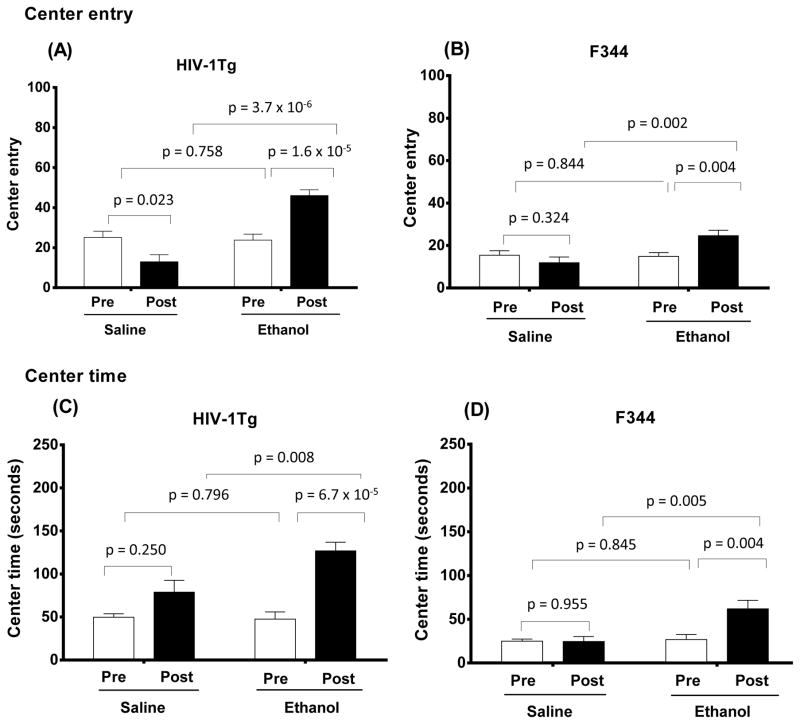Figure 3.
Ethanol effects on center entry (A, B) and center time (C, D) behaviors as measured by a 10-min session in the open field test in HIV-1Tg (A and C) and F344 (B and D) rats. Four experimental groups (saline-treated HIV-1Tg and F344 control rats and ethanol-treated HIV-1Tg and F344 rats) were tested. For each strain, saline- and ethanol-treated rats were tested in pre-treatment baseline trials (“Pre”) and in post-treatment trials (“Post”). Ethanol-treated HIV-1Tg rats (N = 8) showed significantly more center entries and spent more time in the center of the open field test than did saline-treated HIV-1Tg rats (N = 6). Similarly, ethanol-treated F344 rats (N = 13) displayed more center entries and spent more time in the center than saline-treated F344 rats (N = 10). Ethanol treatment also significantly increased both of these measures in HIV-1Tg and F344 rats compared with their baseline levels. In contrast, saline treatment decreased both center entries and center time in both rat strains, with one exception: saline-treated HIV-1Tg rats spent more time in the center of the arena in the post-treatment trials than at baseline (pre-treatment).

